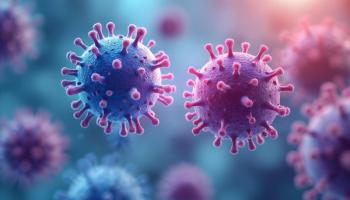
Immune-Enhancing Treatment with ART May Attack HIV Reservoirs
Anti-PD-1 antibodies produced more activated antiviral cells to attack HIV.
Combining antiretroviral therapy (ART) with immune-enhancing treatment may destabilize HIV reservoirs, according to a recent study.
In the body, HIV infects the CD4+ T cells of the immune cells. Although CD8+ T cells help to eliminate the infected T cells, their ability wanes over times.
Prior studies have shown that the loss of function in CD8+ T cells is associated with high levels of PD-1, and that the HIV reservoirs are concentrated in PD-1 and CD4+ T cells.
For the current study, researchers administered 5 infusions of a PD-1 blocking antibody or a placebo to monkeys infected with
The results of the study showed that monkeys receiving the anti-PD-1 antibody produced more activated antiviral CD8+ cells. Furthermore, after ART initiation in the antibody-treated monkeys, the blood levels of SIV became undetectable in an average of 42 days, compared with 140 days in placebo-treated monkeys.
After 8 months of the monkeys having started ART, they were given 3 monthly infusions of either the anti-PD-1 antibody or a placebo. The findings revealed that the PD-1 blockade caused transient increases in the blood levels of SIV, which suggests that the treatment may have destabilized the latent SIV reservoirs.
Authors noted that the findings highlight the potential use of PD-1 blockage with ART and other therapeutic agents to help improve CD8+ T cell function, and destabilize these HIV reservoirs in humans. This strategy could potentially be tested in humans in the future.
The study’s findings were presented at the 21st International AIDS Conference (AIDS 2016) in Durban, South Africa.
Newsletter
Stay informed on drug updates, treatment guidelines, and pharmacy practice trends—subscribe to Pharmacy Times for weekly clinical insights.


















































































































































































































